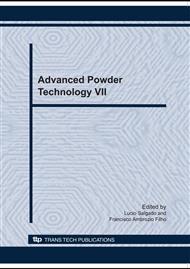p.1049
p.1053
p.1058
p.1064
p.1070
p.1075
p.1081
p.1087
p.1093
Analysis of Used Vegetable Oils Treated with Paraíba/Brazil Clays by Kinematic Viscosity
Abstract:
The search for new sources of renewable energy order to minimize environmental impacts has led the scientists to develop new alternatives, such as the use of recycling of frying oils to produce biodiesel. The utilization of fuels of agricultural origin in the cycle diesel engines is a good alternative to reduce dependence on importation petroleum, since these fuels are a renewable source of energy. The utilization of biodiesel as biofuel is a contribution to the environment, reducing the qualitative and quantitative form levels of environmental pollution. However, these oils should go through a process of decontamination and decoloration up the stage of chemical conversion which is used clay to lighten the oil. This study aimed to characterize clay of Paraíba to be used in the clearing of frying oil. It was observed through the technique of kinematic viscosity the clays show good results in treatment used vegetable oils.
Info:
Periodical:
Pages:
1070-1074
Citation:
Online since:
October 2010
Keywords:
Price:
Сopyright:
© 2010 Trans Tech Publications Ltd. All Rights Reserved
Share:
Citation:


